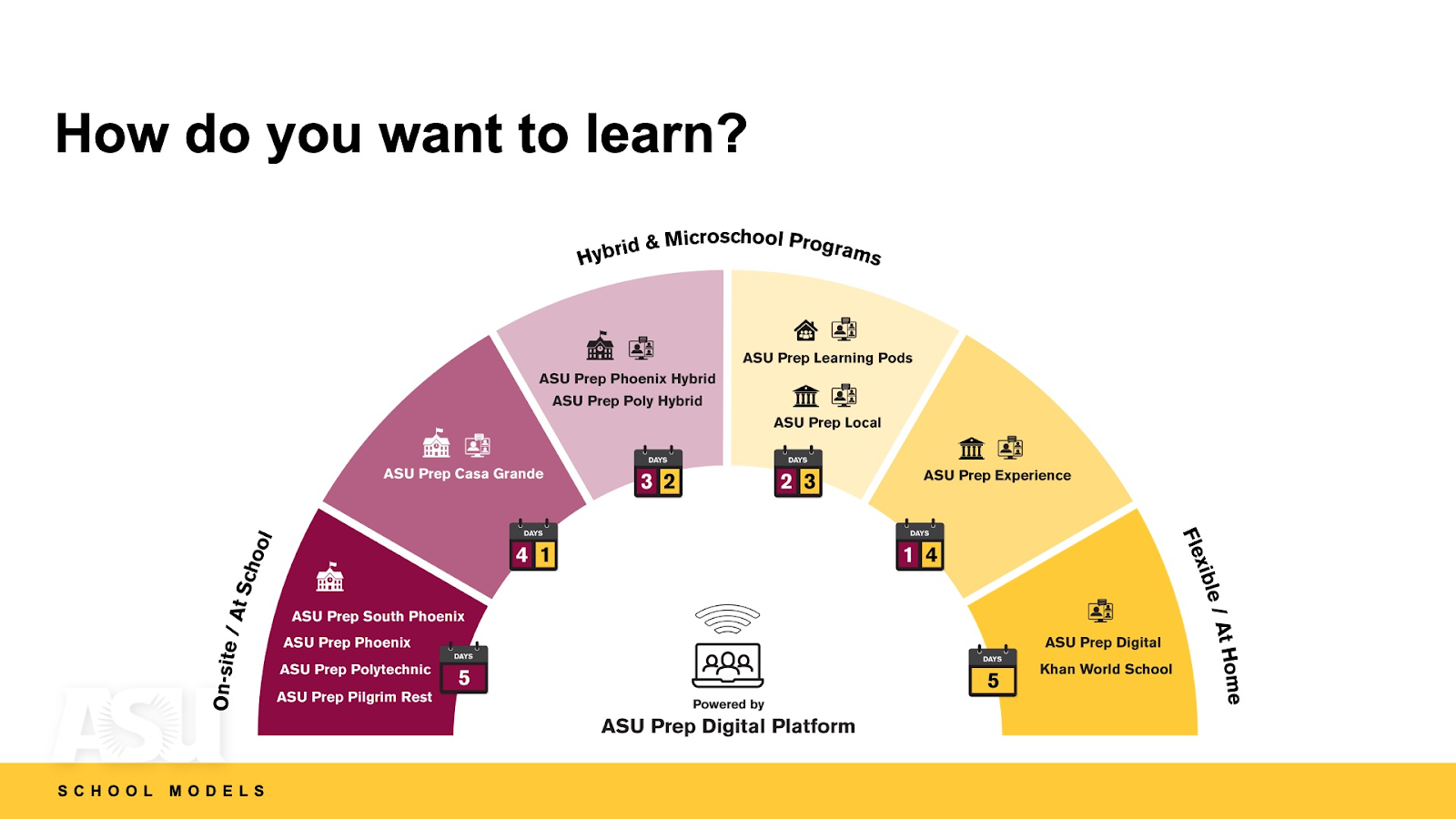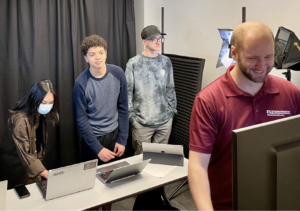Scaling Microschool Ecosystems at ASU Prep
Key Points
-
A number of school networks believe microschools are durable and are leaning into options.
-
Educational ecosystem diversity is increasing rapidly.
-
It is critical that leaders pay attention to a set of important factors to ensure maximum impact on learners.

Throughout the pandemic, microschools emerged as popular innovation models to better serve learners – and indeed, microschools have always been around as school options. To build these microschools, parents, teachers, schools or communities establish small groups of students to focus on a particular learning model and/or curriculum. As the pandemic becomes endemic, the question remains as to whether the growth of the microschool movement is simply a short-term response to the pandemic or a long-term innovation.
A number of school networks believe the model is durable and are leaning into options. ASU Prep, a network of public charter schools in Arizona authorized by Arizona State University, is a network of public charter schools – including ASU Prep Digital, a virtual K-12 school. Over the last few years, ASU Prep launched a set of microschools in an effort to provide more quality innovative options to more students. Other microschools also emerged during this time. Prenda grew exponentially as a community-based model for small groups of ten or fewer K-8 students meeting at home or in community centers. Prenda is funded through charter school partnerships (such as with EdKey’s Sequoia in Arizona) or private pay tuition models. Great Hearts Academy, a network of classical public charter schools, powers Great Hearts microschools in Texas and Arizona through its Great Hearts Online learning program. As microschools proliferate, scale may depend on access to or integration into publicly funded institutions.
University and Early College Connections
Opportunities for microschools have often relied on existing district locations or family homes for locations. Universities and/or colleges provide a unique niche for rich early-college experiences. Outside of the elementary school learning pods, ASU Prep launched a set of innovative microschools to better serve students state-wide (and globally). These microschools complement the existing bricks/mortar and virtual schools within the network.

ASU Prep Local and ASU Prep Experience emerged as a solution for ASU Prep Digital students who wanted to spend time on one of the ASU campuses for part of the week. ASU Prep Local students spend two days a week at either the Mesa MIX Center or West ASU campuses. The students complete courses with a project-based learning approach with local Learning Facilitators and university faculty and build leadership experience all while completing courses through the ASU Prep Digital Platform. ASU Prep Experience students spend one day on the ASU Polytechnic campus and interact with the same learning model as ASU Prep Local. These microschool models are free for Arizona students and provide unique opportunities for college-bound students.
A 10th-grade student at the ASU Prep Local @ Mesa MIX program reports that the program has a “strong commitment to collaboration [which] makes this opportunity perfect for students who prefer a hybrid structure; it allows for independent focus during live lessons and assignment working while also creating time for bonding and team building.”
On-site hybrid models
While the ASU Prep Local and ASU Prep Experience microschools are located directly within a university setting, other microschool models at ASU provide opportunities directly within the high school buildings. ASU Prep Poly and ASU Prep Phoenix launched a hybrid microschool model during the pandemic (and now is a permanent option) as a “school within a school” model – rather than locations on the university campus. These students take some courses directly with on-site teachers using project-based and personalized learning approaches. An on-site Personalized Learning Advisor mentors students and supports academic growth and goal-setting. Other coursework is completed using the ASU Prep Digital platform supported by a Learning Success coach. The hybrid microschool model combines flexibility around where to learn, innovation around what to learn, and all the while getting the benefits of a comprehensive high school model.
Fully online models
While micro-school models tend to be on-site, ASU Prep’s partnership with Khan Academy to form the new Khan World School launched this fall combines the flexibility of the online learning model with the relationship-building microschool elements. Khan World School is powered by both Khan Academy and ASU Prep Digital for some core content and currently serves high school students (with plans to expand to middle school). However, students also gather virtually to tackle some of the world’s biggest questions (such as “Is the world getting better?” and “Should Congress have term limits?”) during a Socratic seminar. The virtual microschool is mastery-based and is tuition-free for Arizona students and fee-based for students outside of the state.
Learning pods
The concept of “learning pods” scaled during the pandemic. ASU Prep Digital launched ASU Prep Digital Learning Pods to meet the growing demand for in-person social interaction among online elementary school students. In these pods, groups of geographically close students spend time together socially and/or academically. The pods operate independently from the ASU Prep Digital core program. Research from the Center for Reinventing Public Education indicated that pods provided more family control and increased educator freedom and recommended a focus on sustainability, access and funding to support scalable models.
What’s next?
New learning models are emerging in response to family demand and student need. Whether private or public, hosted within an existing district or a student’s home, or virtual or on-site, it is clear that educational ecosystem diversity is increasing rapidly. As growth continues, it is critical that leaders pay attention to a set of important factors to ensure maximum impact on learners.
1. Access. Microschools need to be accessible to all students. Bringing diverse perspectives together in a microschool format supports more engaging and more divergent thinking and learning. While tuition-driven private models may be easier to launch, scale will depend on public models built adjacent to or within existing public districts and/or charter organizations.
2. Accountability. Microschools, whether or not they are legally accountable (such as in the public sector), must hold themselves to high standards. Public data on outcomes, feedback surveys, and other metrics will help improve the entire experience for students.
3. Responsiveness. Builders of microschools should be responding to a clear need from a community as opposed to launching just as a business-model proposition.
This post is part of our New Pathways campaign sponsored by ASA, Stand Together and the Walton Family Foundation.







0 Comments
Leave a Comment
Your email address will not be published. All fields are required.